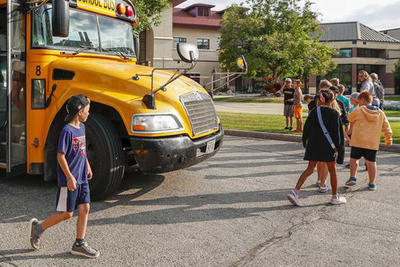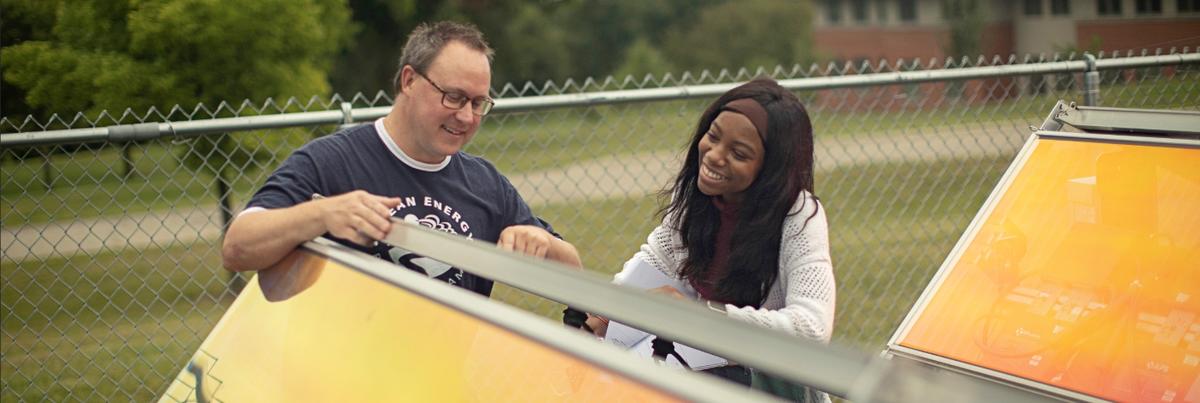
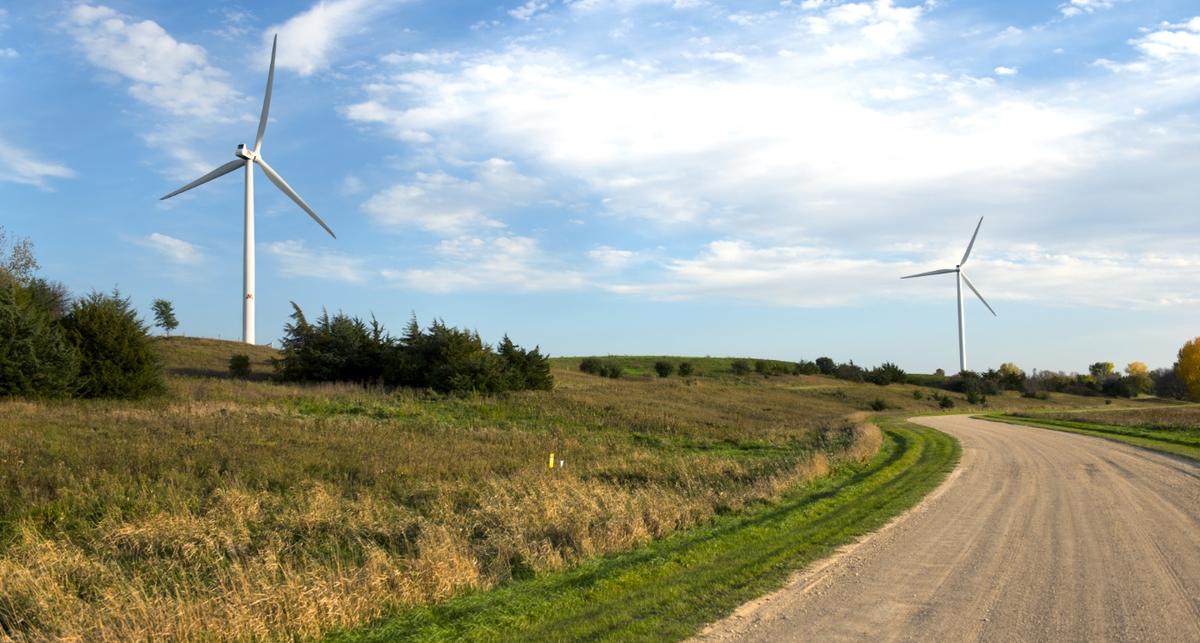
Goodnough believes that rural communities have a big role to play in shaping a sustainable future. He was raised near Ely, MN, and he and his wife, U of M Morris associate chemistry professor Jennifer Goodnough, named their now 16-year-old son after the town.
“I love rural places, and I love being in Morris,” says Goodnough. “We each have a role to play in bridging the rural-urban divide—being in ‘the middle of everywhere’ emphasizes that rural places matter, and it reminds our urban friends that we matter.”
Less than two decades ago, U of M Morris was a small liberal arts college not unlike many others across the nation. Today, the school has transformed itself into one of the most sustainable campuses in America, going carbon neutral in electricity and producing the most renewable electricity per student in America. Even the New York Times took notice in 2022, describing U of M Morris as a model of “how local governments can accelerate their efforts to cut greenhouse gasses while bridging partisan divides to do it.”
Just this past July came more recognition, as the campus and its community partners—a partnership they’ve dubbed the “Morris Model”—were among 67 winners in the first phase of the $6.7 million Department of Energy competition to energize rural communities.
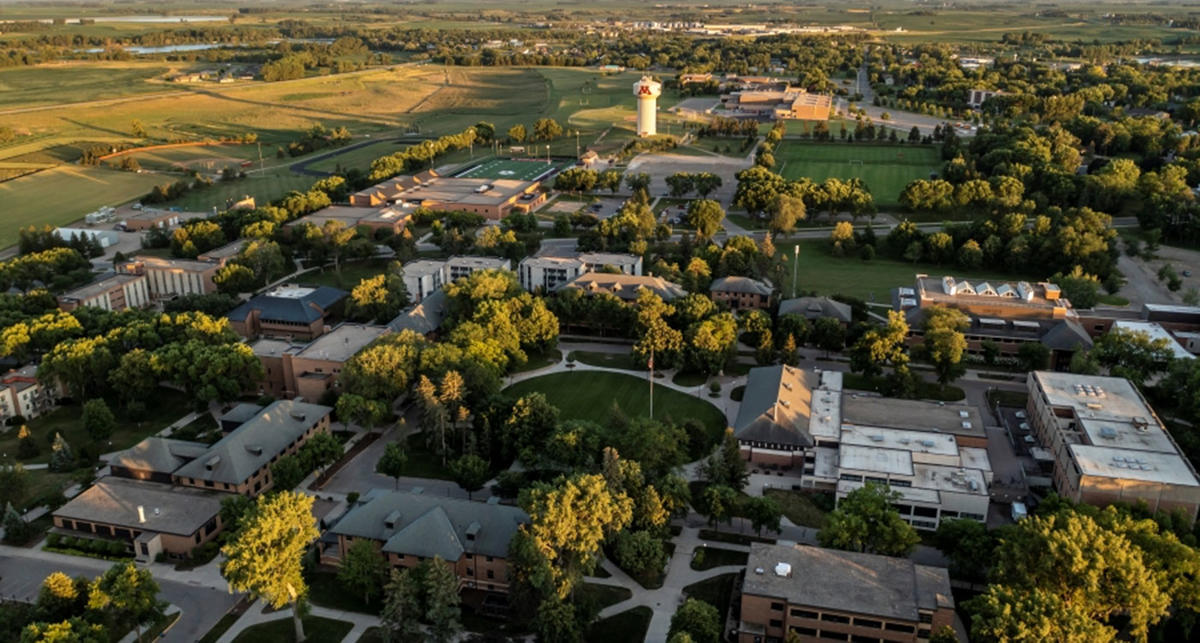
A model sustainable community
The Morris Model, which includes the City of Morris, Morris Area Public Schools, Stevens County, the U of M West Central Research and Outreach Center, and others, seeks to make Morris exactly that: a model rural sustainable community.
Griffin Peck, a 2022 graduate of U of M Morris originally from Apple Valley, MN, now leads sustainability efforts for the City of Morris and also serves as the Morris Model coordinator.
Peck recently completed a report, the Energy and Environmental Roadmap for Minnesota Communities, which describes how the Morris Model came about and lays out how communities, concerned citizens, or city councils can emulate these efforts.
Indeed, Peck says that everyone—from community groups to city councils and state legislators—has visited Morris to learn more about the Morris Model.
One of the first major projects completed with help of the Morris Model was transitioning Morris’s Atlantic Avenue to LED lighting, where U of M Morris students helped with data analysis, research, and grant writing. The street lights had used around 65,000 kWh of energy each year. After the retrofit, lighting used just 15,000 kWh. That’s enough energy savings, says Peck, to power five average family homes for more than a year. And the installation of LED bulbs on city-owned streets also had a cascading effect, as the local utility began transitioning other outdoor lighting within the city.
U of M Morris also led Morris Model partners to adopt composting after a student-led effort to bring it to campus. Currently, city garbage is hauled by truck to other communities, including 130 miles away to Gwinner, ND.
Following the University’s lead, the city and county have also begun composting, and by eliminating organics from the waste stream, the city has substantially cut down on the amount of garbage it needs to haul away, while redistributing nutrient-rich compost to area soils.
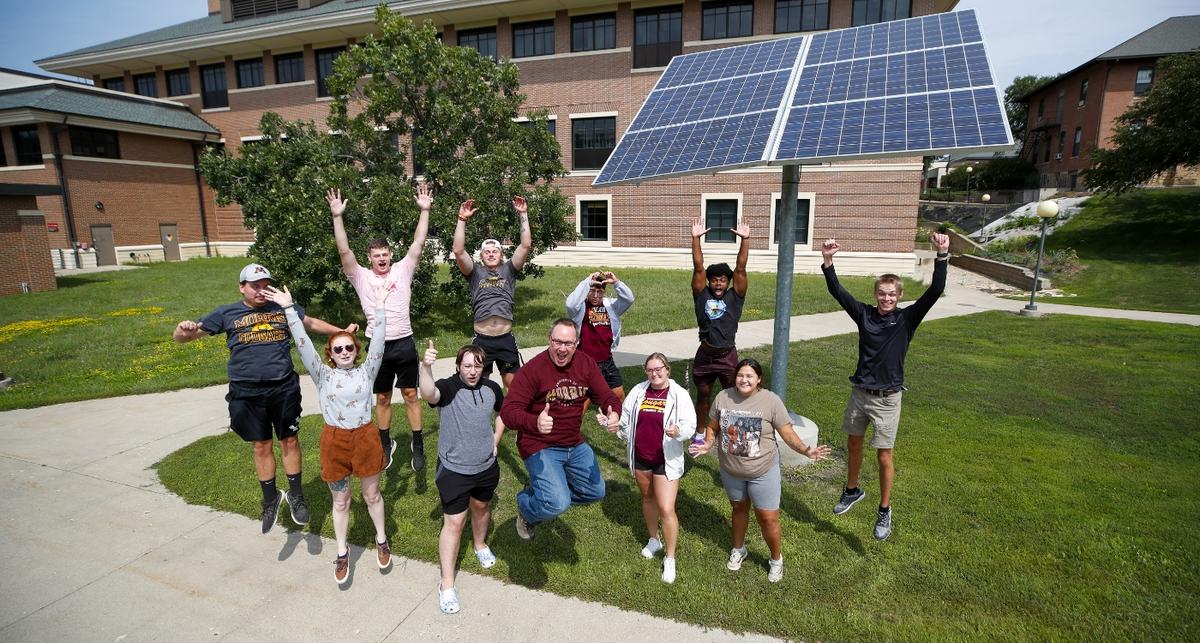
Creating leaders in sustainability
Goodnough points to Peck and many other students as driving much of this change over the years.
Goodnough, who holds degrees in chemistry and chemical engineering from the University of Minnesota Twin Cities, was hired as the first sustainability coordinator in the University of Minnesota System in 2006, and as those who know him will attest, he’s reluctant to take any credit.
“My job is to help shape our aspirations. I'm not in charge of anything,” says Goodnough. “The Office of Sustainability is staffed by me and my student colleagues. We work together with our amazing campus and community partners to assist them in accomplishing their goals. We often help by writing grants, adding analytical capacity, helping them think in a systems way about their goals, and finding resources.”
Peck says that, as a transfer student, they chose to attend U of M Morris largely because of its sustainability efforts, and Peck feels fortunate to have had Goodnough as a mentor.
“He's taught me a lot about relationship-building and how you work as a professional in this space,” says Peck. “He's also very aspirational. He set big goals for us, and sometimes we were like, ‘I don't know if that's something we can do,’ and nine times out of 10, it ends up being something we achieve.”
Now as leader of the city’s sustainability initiatives, Peck also sees goal-setting as critical to their work.
More green campus initiatives at U of M Morris
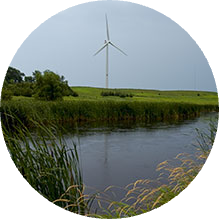
Two U of M wind turbines tower above the Pomme de Terre river as you arrive on campus, on some days producing more electricity than the campus can use (the excess is sold to the local power provider).
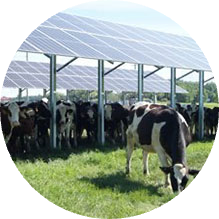
U of M Morris also has a number of solar arrays, including a new 240 kW array that is mounted 10 feet off the ground to allow WCROC’s cattle to graze in the shade on hot days. This solar PV system is an example of agrivoltaics, and is getting statewide attention.
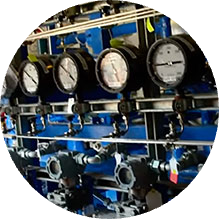
Also near campus, Morris Model partner the U of M West Central Research and Outreach Center (WCROC) is leading globally unique hydrogen research with one of the only community-scale wind-powered hydrogen-to-ammonia skids in the country.
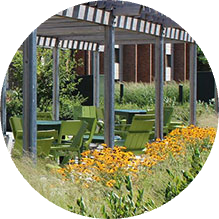
Opened in fall 2013, the LEED-Gold certified Green Prairie Community residence hall is an innovative living and learning environment that complements U of M Morris’s focus on sustainability.
For example, in 2018 the city adopted a strategic plan developed by members of the Morris Model. It set three main goals for the community: locally producing 80 percent of the county’s energy by 2030, reducing energy consumption by 30 percent in that same timeframe, and eliminating landfill waste.
“In just five years, we’ve completed 34 of the 100 projects we initially set up as part of that plan, and another 16 of them are in process,” says Peck. “No one thought we were going to get 50 projects up and running in five years. So now we're trying to think even more aspirationally. What's the next big thing that right now might seem impossible? Because who knows."
Goodnough says he sometimes gets questions about why a liberal arts college would be so committed to community sustainability efforts.
“In a nutshell, it’s because our students want to see things happen. That's really it,” says Goodnough. “We live at a time where students want to see us take action. They want to be a part of a community that reflects their aspirations, and communities like Morris are where the future is happening.”
Related Links
- Learn more about U of M Morris's sustainability goals and initiatives
- Explore the Morris Model
- Learn more about the University of Minnesota Morris
- View coverage about Morris, MN, and U of M Morris in the New York Times and at Minnesota Public Radio
- UMN Morris and UMN WCROC launch the Center for Renewable Energy Storage Technology
- Make a gift to the “UMM Sustainable ‘Green’ Fund.”
Share this story

